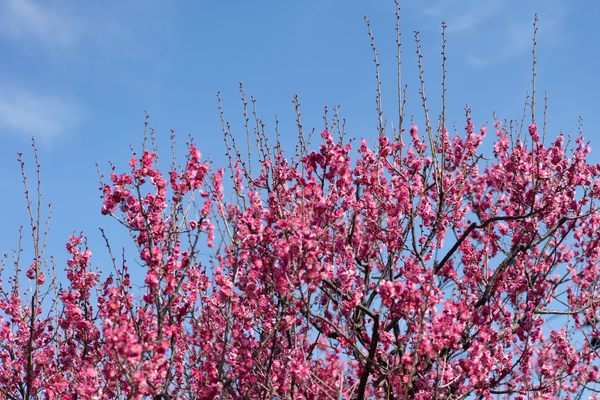AO Edited
Magnolia Grandiflora
A century-old magnolia tree is the only living landmark tree in New York City.
Magnolia trees rarely survive north of Philadelphia, but that isn’t the only reason this evergreen tree, which is more than 100 years old and stands 80 feet tall, is considered one of the Great Trees of New York City. Even the New York City Landmarks commission notes its importance having listed it as the only landmarked tree, and only living landmark, in all five boroughs.
This Magnolia grandiflora, or laurel magnolia, was planted as a seedling in 1885 by William Lemken who had it sent up from North Carolina to plant in his front yard in Brooklyn. In the 1950s, Hattie Carthan basically adopted the tree, tended it, and drew attention to it locally for the magnificent tree it is. The landmarks listing for the tree notes that “…both for its inherent beauty as well as for its rare hardiness that this particular Magnolia grandiflora has become a neighborhood symbol and a focus of community pride.”
Hattie Carthan, affectionately known as “the tree lady,” was an amazing woman and arborist who brought trees and greenery to Bedford-Stuyvesant when the neighborhood was basically abandoned by the city. In 1964 Carthan began a campaign to preserve and plant trees in the neighborhood. She founded multiple organizations to further the ecology and community spirit of Bedford-Stuyvesant, and worked to found over 100 block associations.
The Bedford-Stuyvesant Beautification Committee, which she also founded and ran, planted more than 1,500 ginkgo, sycamore, and honey locust trees throughout Bed-Stuy in an attempt to make the neighborhood not just more beautiful but it make it more of a community. Carthan is noted as having said, “We’ve already lost too many trees, houses and people…your community—you owe something to it. I didn’t care to run.”
In 1970, the magnolia was put in danger when new housing development was under construction next door. Three row houses behind the tree were threatened with demolition to create a city-mandated parking lot. Without the shelter of those buildings and the warmth their basements provided to its roots, the tree would not be able to survive the winter months. Carthan raised funds from the neighborhood to save the brownstones behind the tree. She worked with local schools, raising $7,000 through sales of paper magnolia leaves created by students. The amount was matched by the Horticultural Society in New York. The community’s efforts to save the magnolia drew attention from the Landmarks Commission, and the tree was landmarked the same year. I t remains NYC’s only living landmark. (There was once a second landmarked tree in the city, a weeping birch in Queens, but it died many years ago.)
Carthan died in Bedford-Stuyvesant on April 22, 1984, at the age of 83. Her love of trees and the neighborhood live on in the Magnolia Tree Earth Center, which resides in the three buildings that Carthan worked so hard to protect. The Earth Center notes that “Mrs. Carthan was among the nation’s first African-American community-based ecology activists.” A mural in her honor spans the wall she helped fund to protect the tree, so when you look up at the magnificent magnolia she is looking at it with you.
Know Before You Go
Located directly across the street from Herbert Von King Park, the tree is also one block away from another monument to Hattie Carthan, the Hattie Carthan Community Garden on Marcy Ave, between Lafayette and Clifton.


















Follow us on Twitter to get the latest on the world's hidden wonders.
Like us on Facebook to get the latest on the world's hidden wonders.
Follow us on Twitter Like us on Facebook